Human-wildlife conflict is a shockingly common problem, often with enormous consequences for both individual animals and entire populations.
When human-wildlife conflict comes to mind, you may immediately think of wildlife crime instead - which isn't wrong, since many regions with wildlife crime problems like poaching are also areas where people may frequently deal with human-wildlife conflict, causing the two issues to go hand-in-hand. But human-wildlife conflict is a much broader issue encompassing many ways that human presence and interference can cause problems for us and animals alike. Human-wildlife conflict includes:
- Elephants trampling a farmer's crops, resulting in retaliation
- New real estate developments infringing on ecosystems where predator species live, leading to predators having less territory and less food, which in turn leads to predators attacking domestic animals and livestock
- Freeways dividing the territory of animals like mountain lions, leading to wildlife venturing into neighborhoods or being killed by cars
- Lead bullets used in hunting causing scavengers like condors to die of lead poisoning
These are just a few examples of how humans can negatively impact wildlife, and it's clear to see how many of these scenarios could escalate. Human-wildlife conflict solutions don't just include ways in which we can prevent these issues (for example, through tracking predators, monitoring populations' territories, or building barriers and wildlife crossings monitored by sensors), but also the ways in which we can help people connect with wildlife and care about learning to live alongside them.
If you're interested in solutions that can prevent human-wildlife conflict, join this group and get to know the people who are working to protect and save species around the world!
Header image: Casey Allen on Unsplash
- @csugarte
- | she/her
I am a chilean PhD student working on human-carnivore conflict and coexistence. Currently working with camera traps and automated behavioral response systems.
- 0 Resources
- 2 Discussions
- 4 Groups
- 0 Resources
- 0 Discussions
- 5 Groups
- @Rawail
- | Rawail
NbS Expert/ Environmentalist
- 0 Resources
- 0 Discussions
- 5 Groups
- @NinaTuttie
- | She
An avid learner interested in wildlife ecology, conservation technology and community development
- 0 Resources
- 0 Discussions
- 8 Groups
20+ years traveler and management consultant turned tech founder and conservationist. Founder & CEO of ZAMBEZI ZERØ; super intelligence to safeguard biodiversity.
- 0 Resources
- 0 Discussions
- 15 Groups
- @Agripina
- | Miss
Frankfurt Zoological Society
As a wildlife conservationist, I am deeply committed to nature conservation, community empowerment, and wildlife research in Tanzania. I've actively engaged in community-based projects, passionately advocating for integrating local communities into conservation.
- 3 Resources
- 23 Discussions
- 6 Groups
Hen Mpoano
- 0 Resources
- 0 Discussions
- 3 Groups
African Parks
- 0 Resources
- 0 Discussions
- 9 Groups
BirdLife International
I deliver policy and advocacy components of cross-regional projects and initiatives concerning international site-based conservation, including through international mechanisms such as the Ramsar Convention, Convention on Migratory Species (CMS) and World Heritage Convention.
- 0 Resources
- 0 Discussions
- 4 Groups
- @Anandi7316
- | she / her
- 0 Resources
- 0 Discussions
- 5 Groups
World Wide Fund for Nature/ World Wildlife Fund (WWF)

- 0 Resources
- 12 Discussions
- 15 Groups
- 1 Resources
- 2 Discussions
- 7 Groups
Funding
The European Space Agency is calling for Kick-Start ideas to leverage space technology for wildlife protection. Three main topics of interest have been identified: 1) Wildlife monitoring, tracking and inventory, 2)...
5 July 2017
In this From the Field interview, we speak to Eric Becker, a conservation technology engineer at the World Wildlife Fund US. He talks about his work in technology design and the key challenges he's experienced...
22 May 2017
In this From the Field interview, we speak to Dr. Raman Sukumar, a world renowned expert on Asian elephant conservation. He shares his thoughts on how technology could be used for mitigating elephant-human conflict, and...
5 April 2017
The Camera Traps group is one the most active in our community, with members keen to discuss approaches to data management and processing, study design, and new software and hardware developments. Indeed, the top entry...
23 March 2017
In our new From the Field series, we're speaking with WILDLABS members to discover how they use technology in their work. Through these interviews we will be showcasing the variety of technologies our members are...
22 March 2017
Are you ready for this year's #Tech4Wildlife Photo Challenge? In anticipation, we're counting down our ten favourite entries from last year. Do you think you can top these?
1 March 2017
Carpathian shepherd dogs have been reintroduced to the Zarand Landscape Corridor to guard livestock and help mitigate human-wildlife conflict in Romania.
28 February 2017
The Conservation Leadership Programme (CLP) is a training and capacity building programme that targets individuals from developing countries who are early in their conservation career and demonstrate leadership...
21 November 2016
Technology by itself will not save pangolins or elephants, but it can help make major progress.
14 November 2016
Article
The internet has a long love affair with cat pictures, but these aren’t your mom’s internet cats. Now internet cats are getting even bigger and wilder. In this article, Dr. Lisa Feldkamp talks about the work Panthera is...
26 October 2016
Holohil Systems is now accepting applications for grants to support the purchase of wildlife tracking equipment of up to CDN $2,000 from the Holohil's own product line. Applications are welcome from any geographical...
20 July 2016
Sharing personal 'best of' animal pictures is a favorite pastime of many camera trappers. A prolific camera trapper himself, Roland Kays has pulled together more than 600 images collected by 152 researchers from 54...
18 July 2016
June 2025
event
July 2025
October 2025
event
September 2024
event
32 Products
3 R&D Projects
40 Organisations
Recently updated products
Recently updated R&D Projects
Recently updated organisations
| Description | Activity | Replies | Groups | Updated |
|---|---|---|---|---|
| Hi everybody 👋🏽,I'm a UX designer, and I design interfaces and improve user experiences/flows. I would love to contribute to conservation... |
|
AI for Conservation, Conservation Tech Training and Education, Emerging Tech, Human-Wildlife Conflict | 2 years ago | |
| Hi everyone,I'm new here :)I'm doing my thesis of biology bachelor about Rhino poaching. I wanted to ask here if yu have some articles... |
|
AI for Conservation, Ending Wildlife Trafficking Online, Human-Wildlife Conflict, Wildlife Crime | 2 years 1 month ago | |
| Hi Andrea! Although I am a keen user and observer of the Moveapps initiative, my R or Python coding skills are next to non- existing. I am therefore not likely to be contributing... |
|
Animal Movement, Conservation Tech Training and Education, Data management and processing tools, Emerging Tech, Human-Wildlife Conflict, Open Source Solutions, Software Development | 2 years 2 months ago | |
| I just came across this interesting paper in which seismic monotoring of animals like elephants was mentioned. This is the study refered to:Cheers,Lars |
|
AI for Conservation, Camera Traps, Emerging Tech, Ethics of Conservation Tech, Human-Wildlife Conflict, Geospatial, Sensors | 2 years 5 months ago | |
| Hi everyone, I'm new here! I'm a UX designer and researcher, and an animal lover. Excited to be part of Conservation Tech here at WildLabs... |
|
AI for Conservation, Human-Wildlife Conflict, Software Development, Wildlife Crime | 2 years 10 months ago | |
| Hi @Femke_Hilderink , long time no speak! What an interesting problem/project! Does it have to be paint, as there was this project a while back: I don't know how it... |
|
Human-Wildlife Conflict | 2 years 11 months ago | |
| Why this collaboration platform? What entails to become ENCOSH member? Tackling human-wildlife coexistence issues requires an holistic approach with various initiatives/... |
|
Human-Wildlife Conflict | 3 years 3 months ago | |
| This is an awesome thread and very enlightening. Thank you! I started reading this as Oregon recently had an entire pack of wolves poisoned, and I wanted to understand the... |
|
Human-Wildlife Conflict | 3 years 5 months ago | |
| My colleagues* and I have developed a model for identifying changemakers from forest-dependent communities, and incubating their ideas (... |
|
Human-Wildlife Conflict | 3 years 9 months ago | |
| You should check out Smart Parks (https://www.smartparks.org/) and Hack the Poacher (https://www.hackthepoacher.com/). Also - Fazil, M., & Firdhous, M. (2018... |
+1
|
Human-Wildlife Conflict | 4 years 1 month ago | |
| About a year ago, Lyn Watson from Australian Dingo Foundation approached me with an idea to develope a solution to reduce conflict between... |
|
Human-Wildlife Conflict | 4 years 7 months ago | |
| We actually designed Boombox, the audio player shown above, based on the ABRS system by the Suraci paper and with Dr. Meredith Palmer. We made some optimizations on it since the... |
|
Human-Wildlife Conflict | 4 years 7 months ago |
From the Field: Developing a new camera trap data management tool
7 July 2017 12:00am
Leverage Space Technology for Wildlife Protection with the European Space Agency Kick-start Grant
5 July 2017 12:00am
From the Field: Eric Becker and designing sensors for wildlife
22 May 2017 12:00am
acoustics for Human-Wildlife Conflict Prevention, Anti-poaching, and more
27 April 2017 6:44pm
Upcoming human-wildlife conflict workshop
25 April 2017 2:16pm
Education to combat wildlife crime
2 February 2017 4:54pm
13 February 2017 12:26pm
Hi Chris,
@StephODonnell thanks for the heads up on this question!
United for Wildlife have an free online course https://learn.unitedforwildlife.org/ which has an "Introducing Conservation" lesson which covers conservation basics.
Over this year we're (for transparency - I work on the project) releasing a new series of Insights on specific areas of conservation.
So far we've released "Species and Spaces" and "Worth More Alive" insights - the latter is focussed on the Illegal wildlife trade.
We're also releasing a series of films called "Natures Guardians" which focus on the Southern African Wildlife College and cover some of the aspects of ranger training. You can view these on our YouTube channel https://www.youtube.com/playlist?list=PLH4rBFGCnvow7YQe3ycwWJ3mVR2MAwuIu or Facebook page
Thanks!
12 April 2017 5:30pm
Peter, thanks for your reply and sorry for the dealyed repsonse, I have been ahving some issues getting alerts in my email. I would like to talk to you more about your trafficking courses, especially who you have identified as your target audience and what the model was that these courses were designed aorund.
From the Field: Dr Raman Sukumar and Technology Developments Needed to Conserve Elephants
5 April 2017 12:00am
Foxlights predator deterrant
24 November 2015 6:53pm
22 March 2017 11:29pm
Sorry I have no idea about separate solar radios. However the "Jakkalsjaer" a South-African product, includes solar panels and a siren with the radio and costs about US$123.36 at current exchange rates.
http://www.farmersweekly.co.za/archive/wanted-non-lethal-predator-control/
You can contact André Theron directly: asco@mtnloaded.co.za
HTH
Chavoux
23 March 2017 12:24pm
Thanks for the reply. I will write to the contact because of the doubts.
24 March 2017 8:22pm
Personally, I'd order a few of the $10 radios from eBay and see how they work. They are cheap enough that if they don't work out, you wouldn't be out much money.
For $27, you could try one of these which is rated Waterproof Level IPX3; it can be used during rainy weather.
From my brief search, I think you are going to have a tough time finding something solar, waterproof, and inexpensive. But do let us know what you turn up!
How to stop the thieves when all we want to capture is wildlife in action
23 March 2017 12:00am
From the Field: María José Bolgeri and tech to alleviate Puma-Human conflict
22 March 2017 12:00am
#Tech4Wildlife Photo Challenge: Our favourites from 2016
1 March 2017 12:00am
Working with wolves: Sheepdog puppies join new flock
28 February 2017 12:00am
Infrastructure impacts
22 December 2016 4:12pm
6 January 2017 10:06am
Hi Nilanga,
This is a topic of my interest too. I have been doing some work on getting some mitigations implemented on some highways in central India. So what excatly do you mean by tools? Some gadget to detect physical presence on large mammals around highways and railway tracks ? Or some software tools to predict animals crossings along them.
Regards
Udayan
6 January 2017 1:36pm
Hi Udayan,
Many thanks for following up and it's great to hear that it's an area of interest for you as well. I'm certainly interested to hear more about the work you've been doing on mitigation actions implemented or being tested to prevent wildlife collisions on highways in central India. Are they early detection tools? By tools, I mean either technology to detect presence and provide warnings to drivers or railway operators, or even tools to predict based on movement patterns. I'm interested in learning about any such measure that is being developed. You may be aware that in the last month alone, around 11 elephants have died from train collisions in northeast India. If there are means being developed to detect presence and prevent such deaths, it would be wonderful to know more about them and how we could test and implement such measures. Look forward to hearing from you.
Best,
Nilanga
Wolf protection vests for dogs
14 December 2016 1:49pm
Conservation Leadership Programme 2017 Award
21 November 2016 12:00am
5 Smart Technologies That Will Crack Down On Wildlife Trafficking
14 November 2016 12:00am
WildLabs success! E-shepherd predator deterrent trials in USA
25 January 2016 8:04pm
11 February 2016 8:14pm
Thanks, @Suzanne.Stone ! It would be wonderful if the community could track your progress in this thread. Also looking forward to reading your Journal of Mammology paper.
- Rachel
26 April 2016 2:12pm
@Rachel , the last time I checked (2015), it was about R1200-00 per collar. In South Africa that can be approximated as the price of one sheep. To my mind, that only makes it viable and affordable if the predation (or theft?) levels are very high (more than 10% losses/year?).
I have to add two additional observations:
- Sheep breeds differ in the extend to which they flock together in a single herd (e.g. African indigenous breeds graze together in larger herds than the most popular breeds in South Africa (Merino or Dorper). In these breeds it might be possible to have less collars per sheep.
- My greatest fear is that it will work wel for a year or two. Jackals (and I assume coyotes as well) are extremely intelligent. And methods which worked at first (e.g. bell collars) soon became useless. With jackals we also have the issue that many of the jackals on farms are now starting to hunt in packs instead of the typical territorial pairs (with helpers). So a commonly solitary hunter (the pairs would often hunt separately) is now turning into a pack hunter. However, I do think that it might remain fairly effective against solitary cats. I would be interested in the results of the tests in America, but I think it should be for at least a 3 year period (I know funding etc. might be an issue).
3 November 2016 5:09pm
@Suzanne.Stone have you had any success with your trials in Idaho?
Camera Trap based Alarm Systems
22 March 2016 9:14am
12 April 2016 10:19am
This might be a silly question, but why do you need a camera trap for either purpose - unless you want a record of specific individuals?
If the aim is to provide an alarm to scare off elephants then a system that uses a simple motion sensor wired to an alarm would do the same thing at a much lower cost without the risk of damage or theft that all camera traps suffer from.
If the aim is to alert locals then the Indian Nature Conservation Foundations Elephant Early Warning System is worth exploring http://ncf-india.org/projects/in-the-elephant-hills
21 April 2016 9:01pm
Hi James,
Thanks for sharing information on NCF's early warning system. NCF's tool is great and works well for the context in Valparai where it's being used. We work closely with them as well. As you are aware, the context for each conflict situation is different. These are open plantation areas where elephants can be seen if present in any patch, while in other areas, it's harder to tell when they come out of forested protected areas and into adjacent habitation in order to warn people. And for a number of the landscapes where we work, that particular approach may not be as effective, we are trying to test other forms of early detection. Do let us know if you learn of any results from camera-trapping early warning systems as well using a tool that could potentially serve multiple purposes. Many thanks.
Nilanga
27 October 2016 11:01pm
Hi everyone!
I have just posted about my machine-vision based elephant-detection system which I am currently attempting to develop! https://www.wildlabs.net/community/thread/284
Internet Cats Just Got Bigger
26 October 2016 12:00am
New journal article shows deficiency of studies on effectiveness of predator controls
2 September 2016 1:46pm
How can we bridge the gap in mitigating human-wildlife conflict?
2 August 2016 1:23pm
27 August 2016 5:09am
Hi John, I have two good friends in Kenya who have some answers. I'll ask them to come here and tell you more...
Marie
Perspectives from the World Ranger Congress
10 August 2016 12:00am
Wildlife Tracking Equipment Grants from Holohil Transmitters
20 July 2016 12:00am
Article: Drawing Eyes on Cow Butts May Ward Off Hungry Lions
19 July 2016 7:25am
Camera traps reveal mysteries of nature
18 July 2016 12:00am
Can Drones Live up to the Hype?
8 July 2016 12:00am
Passive Acoustic Monitoring: Listening Out for New Conservation Opportunities
29 June 2016 12:00am
TEAM Network and Wildlife Insights
28 April 2016 12:00am
Migration monitoring app
25 April 2016 1:36pm
Deterring bears while backpacking
5 April 2016 3:15pm
19 April 2016 3:32pm
Ho John,
That's a great idea and thanks for sharing, but as you said, limitations on battery and speaker capacity abound. Might anyone else have any thoughts on how we could use apps to prevent HWC? There are apps that provide the ability to track wildlife through satellite collars for monitoring purposes. Is anyone aware of whether this type of app is being used also for HWC prevention using geo-fencing through collars or other means? Thanks.
Nilanga









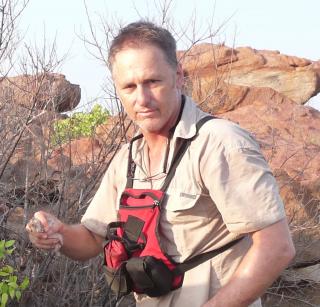
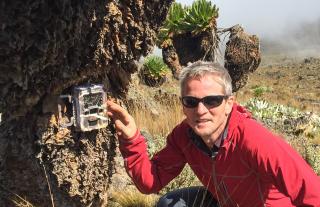




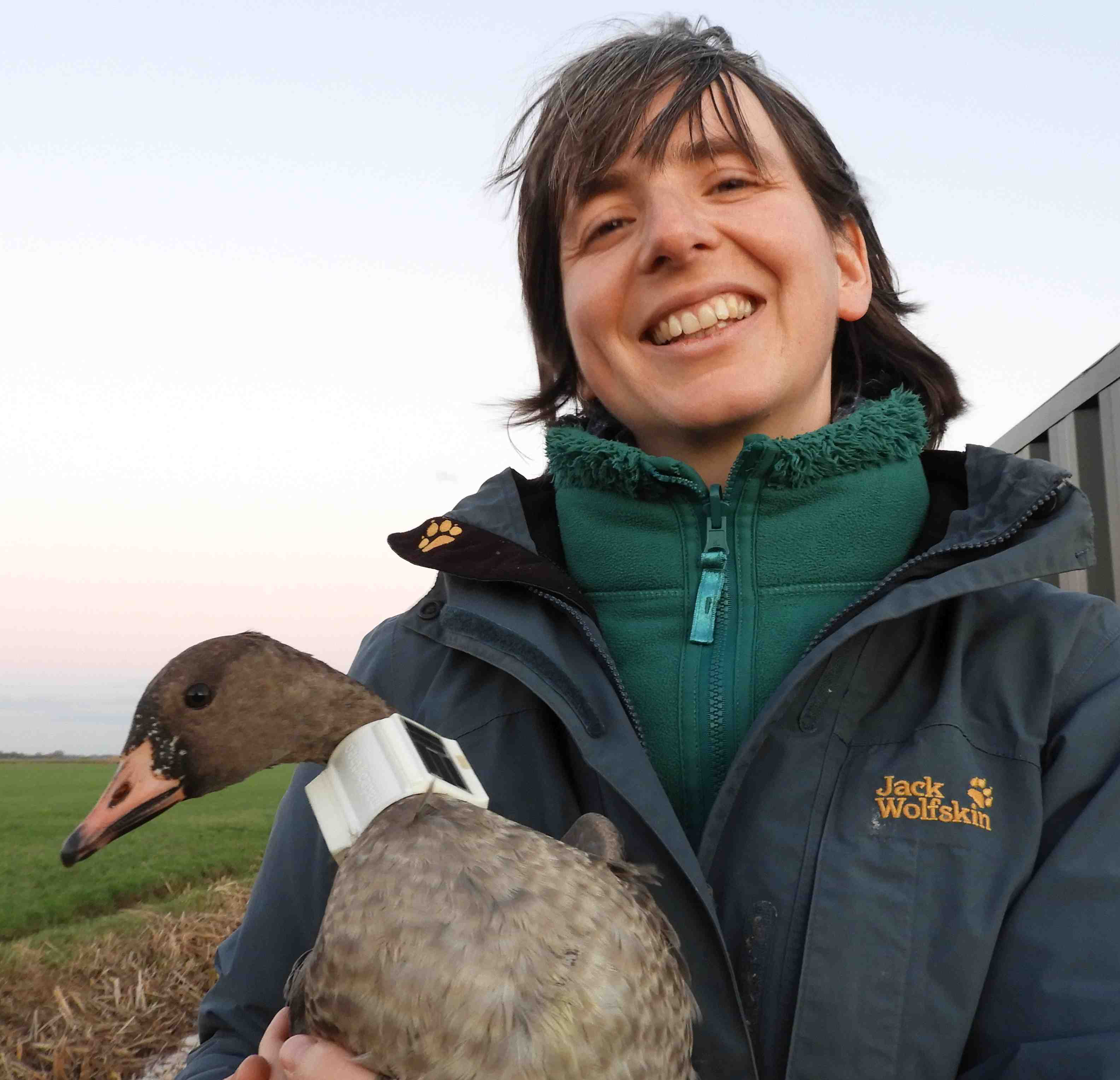

















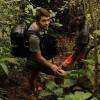
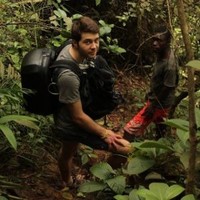





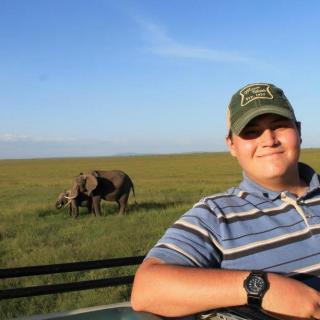












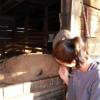

9 February 2017 1:09pm
@StephODonnell Good to hear from you, and thanks for drawing my attention to this question!
Hi Chris,
As Steph is mentioning, as Ranger Campus Foundation we aim to strengthen law enforcement in protected areas, by focusing on ranger training. We are developing an e-learning platform (Ranger Academy) and acconpanying training modules specifically targeted to the needs of rangers. The content is based on the training guidelines that were written by the big players in the field and were just made public:
http://d2ouvy59p0dg6k.cloudfront.net/downloads/anti_poaching_training_guidelines___electronic_version.pdf
Main advantages of Ranger Academy are:
- Combine e-learning with physical training and shorten the time you spend on basic level training. This enables instructors to make better use of their time when on the ground.
- Rangers can access their personal e-learning environment when they have time for it - no internet is required for following lessons. So no need to take people off patrols.
- Rangers can communicate with other rangers around the world and lessons in all modules are given by rangers.
- Managers have more insight in ranger competence levels and certificates acquired.
This turned into quite a story so will leave it at that. Let me know if there is anything I could assist with.
Best wishes,
Dominique
P.S. Attaching a picture of the filming of the Care under Fire module last month, where Joseph is demonstrating the correct use of a tourniquet. Picture copyright of Cees Baardman.